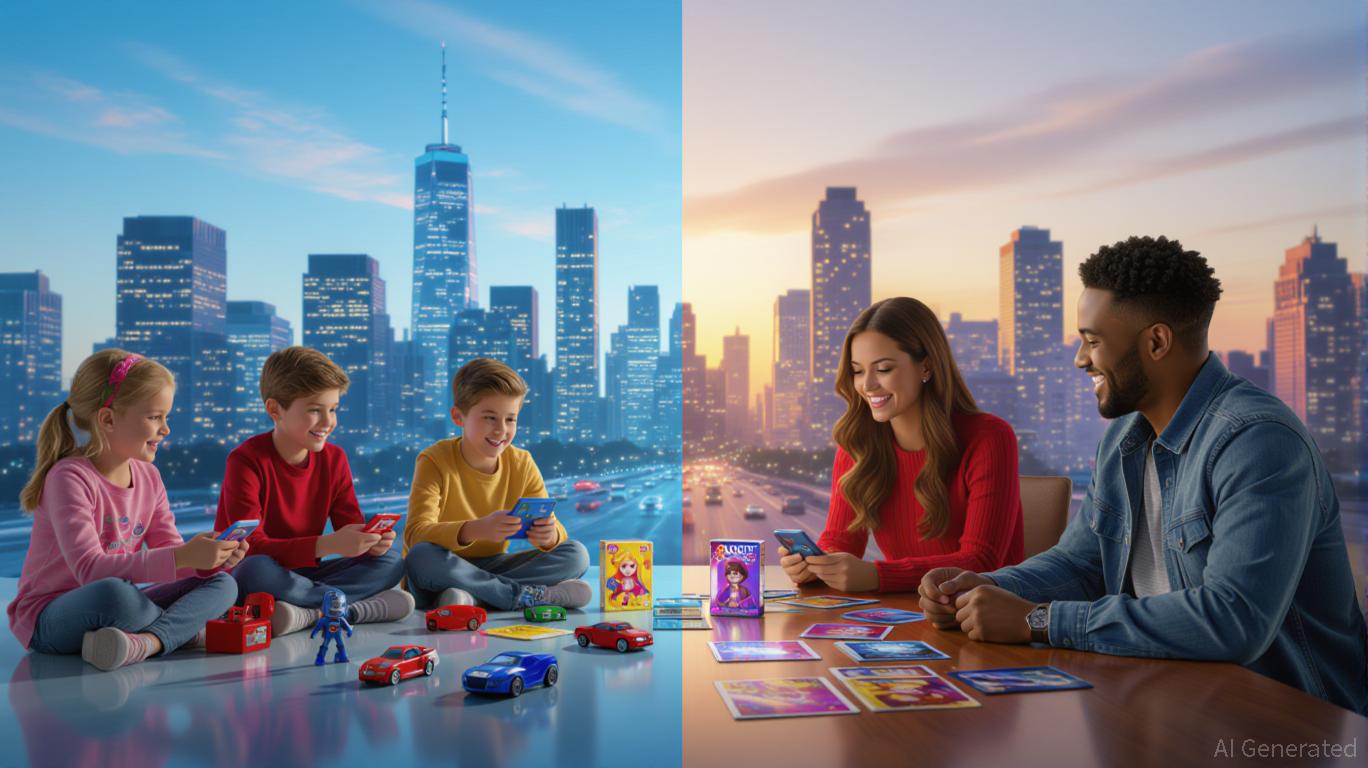Isaac LaneWednesday, Jul 23, 2025 1:02 pm ET
![]() 36min read
36min read

Hasbro, the 90-year-old toy and entertainment giant, is undergoing a seismic transformation. Once synonymous with plastic action figures, board games, and plush toys, the company now finds itself at the forefront of the digital gaming revolution. This shift is not merely a response to changing consumer preferences but a calculated pivot to insulate itself from the twin threats of tariffs and the declining margins of traditional toy manufacturing. By doubling down on high-margin digital offerings like Magic: The Gathering and Monopoly Go!, Hasbro is redefining its identity—and its investors’ expectations.
The Decline of the Physical Toy Sector
Hasbro’s Consumer Products segment, which includes traditional toys, has been a sinking ship for years. In 2024, the segment’s revenue fell 12% year-over-year, with full-year declines of 22% in Europe and Latin America and 9% in the U.S. Tariffs on Chinese and Vietnamese imports—accounting for 50% of its U.S. toy production—have added $60–180 million in annualized costs. Even excluding these tariffs, the segment’s operating margin contracted to a meager 6% in 2024, a stark contrast to the 41.8% margin in its gaming division. Brands like NERF and Star Wars (which saw a 52% revenue drop since 2019) have become anchors, dragging down performance until a potential revival from the Mandalorian movie in 2026.
The Rise of High-Margin Gaming
The Wizard of the Coast and Digital Games segment, however, tells a different story. In Q2 2025, this division generated $522 million in revenue—a 16% year-over-year increase—driven by Magic: The Gathering and Monopoly Go!. Magic, in particular, has become a cash cow: its Final Fantasy set set a sales record, and the franchise’s operating margin now exceeds 49%. Monopoly Go! added $44 million in Q2 2025 alone, with its digital format offering low production costs and high scalability. Together, these titles now account for roughly 50% of Hasbro’s total revenue, up from just 30% in 2021.
The economics of digital gaming are a stark contrast to the physical toy business. While tariffs and supply chain costs erode margins in traditional segments, digital offerings boast near-zero marginal costs. For example, Monopoly Go! contributed $112 million in 2024 revenue with no need for manufacturing, shipping, or retail markups. This scalability is why Hasbro’s gaming segment now operates at a 46.3% margin—over four times the Consumer Products segment’s margin.
Offsetting Tariff Headwinds
Hasbro’s strategic pivot is not just about growth—it’s about survival. The company projects $60–180 million in tariff-related costs for 2025, with the brunt felt in Q3 and Q4. However, its $1 billion Operational Excellence Program has already generated $98 million in cost savings, with plans to offset 40–60% of tariff costs through efficiency gains. Meanwhile, the gaming segment’s profitability provides a buffer. In Q2 2025, the Wizards of the Coast division’s $80.9 million operating profit (a 23.9% margin) directly counterbalanced the Consumer Products segment’s $181 million revenue decline. This financial resilience is critical as tariffs remain a near-term drag.
Competitive Position and Long-Term Potential
Hasbro’s digital gaming strategy is not without competition. Mobile gaming giants like Zynga and King dominate the casual gaming space, but Hasbro’s advantage lies in its IP portfolio and hybrid monetization model. Magic: The Gathering has maintained its dominance in collectible card games for decades, while Monopoly Go! has reinvigorated a 98-year-old brand with a mobile-first audience. The company’s “Universes Beyond” strategy—expanding Magic into franchises like Final Fantasy and Marvel—has broadened its appeal beyond core gamers.
The market is also shifting in Hasbro’s favor. Mobile gaming now accounts for 49% of the $200 billion global gaming industry, with free-to-play models generating 85% of all game revenue. Hasbro’s focus on in-app purchases, subscriptions (e.g., Secret Lair collectibles), and cross-platform play positions it to capitalize on these trends. Meanwhile, its Wizards Play Network, now spanning 9,000 locations globally, creates a sticky community that drives recurring engagement.
Investment Implications
For investors, Hasbro’s transformation presents a compelling case. The company has raised its 2025 guidance, projecting high-single-digit growth in its gaming segment and flat-to-down performance in Consumer Products. While risks remain—overreliance on a few titles, regulatory scrutiny of loot boxes, and the eventual saturation of the digital gaming market—Hasbro’s margin profile and strategic agility offer a hedge against these challenges.
The key question is whether this pivot is sustainable. Hasbro’s success hinges on its ability to innovate within its existing IP while expanding into new digital formats (e.g., a rumored Dungeons & Dragons action-adventure game). If it can maintain its 46.3% margin in gaming while gradually phasing out unprofitable toy lines, the company could achieve long-term outperformance.
In an era where tariffs and global supply chain disruptions are the new normal, Hasbro’s shift to high-margin digital gaming is not just a strategic move—it’s a masterclass in resilience. For investors willing to bet on the future of play, the company’s “Playing to Win” strategy may just deliver a winning hand.
